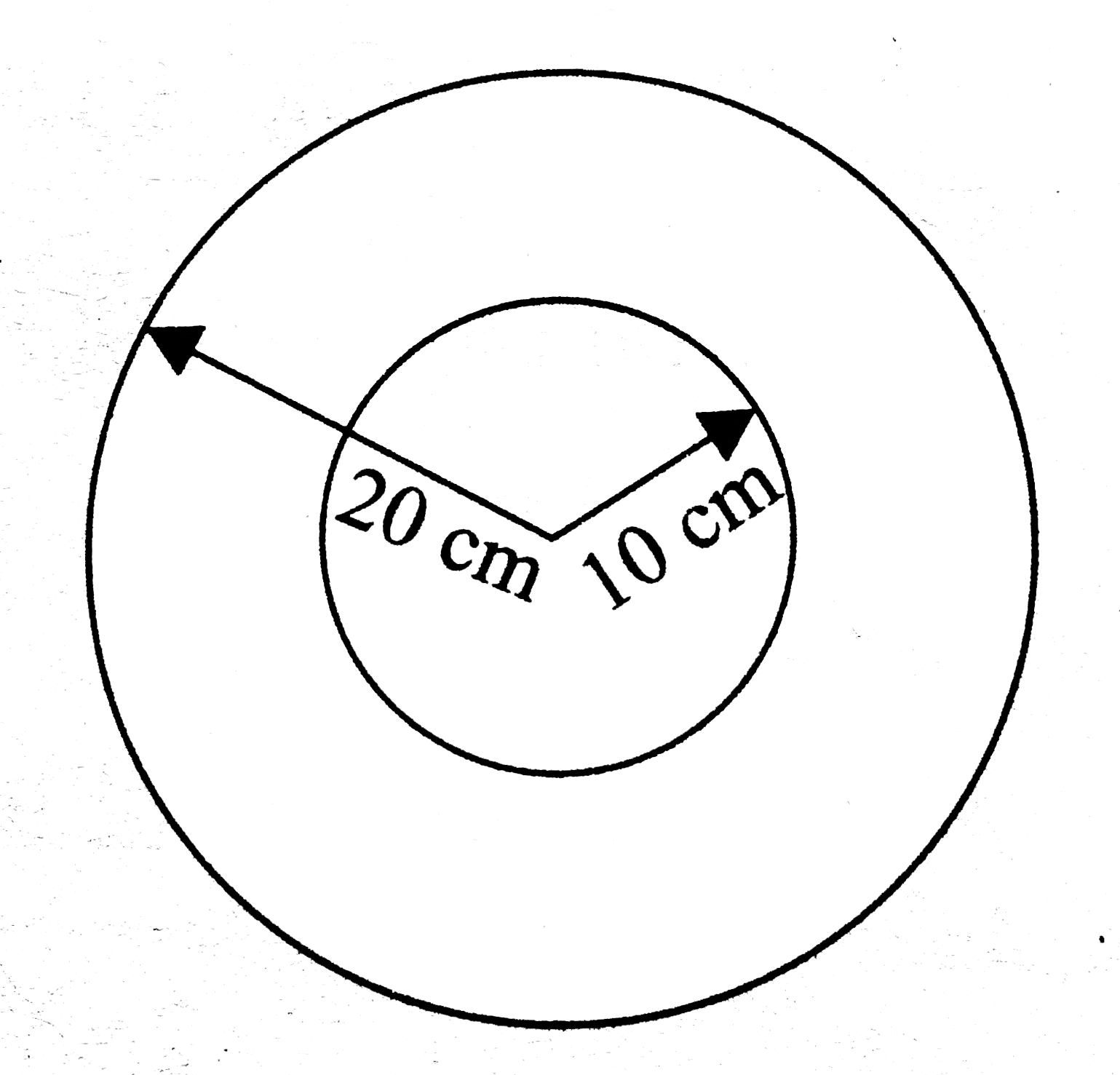The electric field strength in air at NTP is 3×106V/m. The maximum charge that can be given to a spherical conductor of radius 3m is
3×104C
3×10−3C
3×10−2C
3×10−1C
The correct Answer is:B
To solve the problem, we need to determine the maximum charge that can be given to a spherical conductor of radius 3 meters, given the electric field strength in air at normal temperature and pressure (NTP) is 3×106V/m.
1. Identify the Given Values:
- Electric field strength, E=3×106V/m
- Radius of the spherical conductor, r=3m
2. Calculate the Potential (Voltage) on the Surface of the Sphere:
The potential V at the surface of the sphere can be calculated using the formula:
V=E×r
Substituting the values:
V=(3×106V/m)×(3m)=9×106V
3. Calculate the Capacitance of the Spherical Conductor:
The capacitance C of a spherical conductor is given by:
C=4πϵ0r
where ϵ0 (the permittivity of free space) is approximately 8.85×10−12F/m. Thus:
C=4π(8.85×10−12F/m)×(3m)
Calculating this:
C≈4π×8.85×10−12×3≈3.34×10−10F
4. Calculate the Maximum Charge (Q_max) that can be Stored:
The maximum charge Qmax that can be stored on the conductor is given by:
Qmax=C×V
Substituting the values of capacitance and voltage:
Qmax=(3.34×10−10F)×(9×106V)≈3.006×10−3C
5. Final Result:
Therefore, the maximum charge that can be given to the spherical conductor is approximately:
Qmax≈3.006×10−3C or 3mC
- Electric field strength, E=3×106V/m
- Radius of the spherical conductor, r=3m
The potential V at the surface of the sphere can be calculated using the formula:
V=E×r
Substituting the values:
V=(3×106V/m)×(3m)=9×106V
The capacitance C of a spherical conductor is given by:
C=4πϵ0r
where ϵ0 (the permittivity of free space) is approximately 8.85×10−12F/m. Thus:
C=4π(8.85×10−12F/m)×(3m)
Calculating this:
C≈4π×8.85×10−12×3≈3.34×10−10F
The maximum charge Qmax that can be stored on the conductor is given by:
Qmax=C×V
Substituting the values of capacitance and voltage:
Qmax=(3.34×10−10F)×(9×106V)≈3.006×10−3C
Therefore, the maximum charge that can be given to the spherical conductor is approximately:
Qmax≈3.006×10−3C or 3mC
Topper's Solved these Questions
Similar Questions
If the electric field strength of air is 3×106V/m, what will be the maximum potential at the surface of a metal sphere of radius 1m.
View SolutionThe is one parallel plate air capacitor having plate area 40 cm2 and separation between the plates equal to 0.1 mm. Dielectric strength of air is 3×106 V/m. find maximum rms voltage that can be applied across capacitor without electric breackdown.
View Solution
Knowledge Check
The insulation of air vanishes when the electric field is 5×105 V/m .the maximum charge that can be given to a sphere of radius 3m is approximately
A5μCB500μCC10μCD1μCThe insulation property of air breaks down at E=3×106volt/meter. The maximum charge that can be given to a sphere of diameter 5m is approximately (in coulombs)
A2×10−2B2×10−3C2×10−4D2×10−5A conducting spehre has a radius 30 cm .If the dielectric strength of surrounding air is 3'106 V/m, the maximum amount of charge the sphere can holdin micro coulombs is
A0.03B0.3C3D30
We have two metal plates of surface area 1m2 to construct an air parallel plate capacitor. A potential difference of 210 V is to be applied across the capacitor. The dielectric strength of air is 1 and electric field between the plates is 3×106V/m. What can be the minimum separation between two plates? If the capacitor is constructed accordingly then how much charge it will hold when connected across a 210 V supply?
View SolutionThe electric intensity at a point 1 metre from the centre of a charged spherical conductor of radius 20 cm is 105N/C. If the conductor is in a medium of permittivity 35.4pF/m, the surface density of charge on the conductor is
View SolutionWe have an isolated conducting spherical shell of radius 10cm. Some positive charge is given to it so that the resulting electric field has a maximum intensity of 1.8×106NC−1. The same amount of negative charge is given to another isolated conducting spherical shell of radius 20cm. Now, the first shell is placed inside the second so that both are concentric as shown in (Fig. 3.154).
 .
.
The electric field intensity just inside the outer sphere.
View SolutionWe have an isolated conducting spherical shell of radius 10cm. Some positive charge is given to it so that the resulting electric field has a maximum intensity of 1.8×106NC−1. The same amount of negative charge is given to another isolated conducting spherical shell of radius 20cm. Now, the first shell is placed inside the second so that both are concentric as shown in (Fig. 3.154).
 .
.
The electric potential at any point inside the first shell is.
View SolutionWe have an isolated conducting spherical shell of radius 10cm. Some positive charge is given to it so that the resulting electric field has a maximum intensity of 1.8×106NC−1. The same amount of negative charge is given to another isolated conducting spherical shell of radius 20cm. Now, the first shell is placed inside the second so that both are concentric as shown in (Fig. 3.154).
 .
.
If both the spheres are connected by a conducting wire, then.
View Solution
